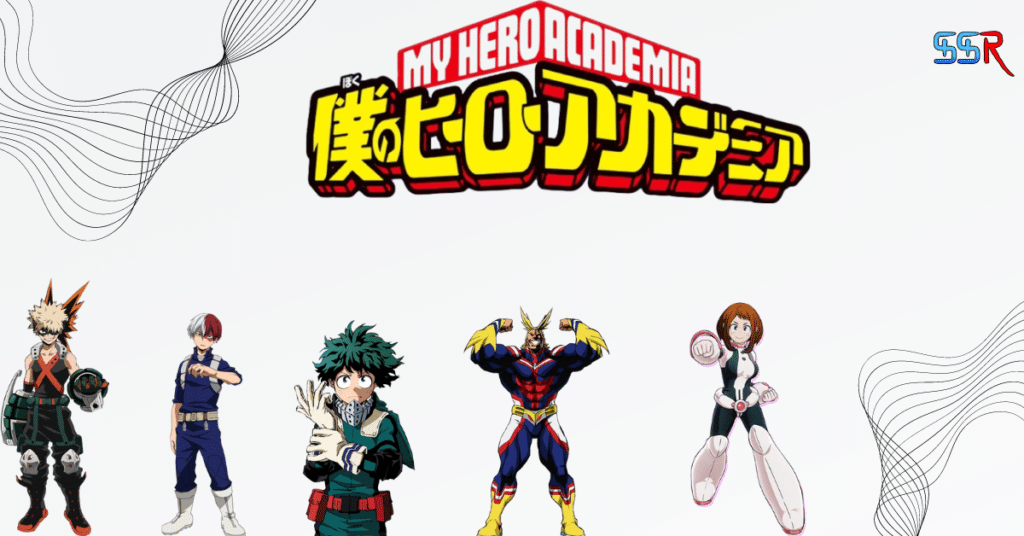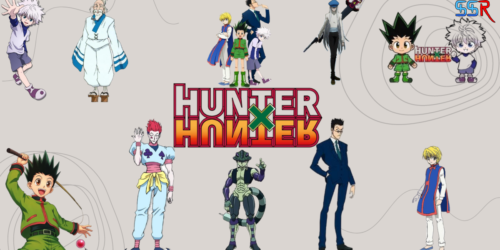My Hero Academia: Unveiling the Secrets Behind Its Global Success

Introduction
This article illustrates the influence and importance of the anime series ‘My Hero Academia’ that became viral after it was first launched and has now become one of the most important parts of contemporary anime culture. Through its characters which have depth, the detailed universe that is created, and universal themes in human societies, this series not only has a large following but also had such an impact on the superhero genre across different mediums. This article will discuss in detail features of ‘My Hero Academia’ as an exceptional anime series and analyze what draws people’s attention to this show from all over the world.
A Brief Overview of My Hero Academia
My Hero Academia is a Japanese manga series written and illustrated by Kōhei Horikoshi. It’s been serialized in Weekly Shōnen Jump since July 7, 2014, and twenty-four volumes have been collected in tankōbon format. It is set in a world where almost all people possess superpowers, known as “Quirks”. The story follows Izuku Midoriya, a boy born without Quirks aspirations to follow the steps of his idol All Might becoming the greatest hero. Training to become the new Symbol of Peace with the help of his teacher All Might (who shares his Quirk with Izuku after recognizing his potential) believes that Izuku can become that symbol for future generations.
The Appeal of a Quirk-Filled World
One of the main draws of “My Hero Academia” is its world-building. It’s a world not unlike our own, but the fact that Quirks exist has completely changed how society works. This show delves into what being a super-powered society would actually mean, and it asks tough questions about what makes a hero, why people would choose to be heroes, and how heroes can go corrupt. We see so many different types of Quirks in this anime as well as creative ways to use them in battle.
Complex and Relatable Characters
Izuku Midoriya (Deku)
The protagonist is a character that can be anyone. Literally. But what made Izuku Midoriya such an icon? Born without a Quirk (a genetically inherited super power in the world of My Hero Academia), Midoriya is just about the last person on earth who should become a hero, but he wants to be one more than anyone. One that smiles and helps people like his idol All Might, the number one hero in the world who could literally atomize a mountain with a single punch. All Might sees something within Midoriya worth saving and passes on his quirk “One For All”, turning Midoriya into his ideal successor.
All Might (Toshinori Yagi)
The Symbol of Peace. The number one hero, All Might’s very nature commands love and peace and just all around good vibes. But it’s because of that larger than life personality that All Might has created for himself, his ideals of justice and of course, his strength… that makes him so likable. I mean… who doesn’t like a hero? For Midoriya Izuku, All Might is more than just his idol… he becomes his mentor as well as the helping hand that guides him through many tough times in becoming a Pro Hero…and to be bettering himself.
Katsuki Bakugo
Midoriya’s childhood friend and rival, this hotheaded character possesses the Explosion Quirk. Arrogant and prideful, Bakugo is driven to become the best hero, though his reasons are more selfish than others. Bakugo’s character development takes us from a bully to a hero who understands that winning isn’t everything.
Shoto Todoroki
Another crucial student at U.A High School, Todoroki has a dual Quirk that lets him wield both ice and fire, and his family issues, specifically, his abusive father, Endeavor who gave him a tragic backstory. In fact, Todoroki’s quest to become comfortable with both sides of his power while still being able to enjoy working as a hero is one of the most interesting through-lines in the whole series.
Ochaco Uraraka
Uraraka is a kind-hearted and determined student at U.A. High School with a Quirk that allows her to make objects weightless. She is one of Midoriya’s closest friends and harbors feelings for him. Uraraka’s motivation to become a hero stems from her desire to support her family financially, making her one of the more relatable characters in the series.
Tomura Shigaraki
League of Villains’ leader and the series’ primary antagonist, Shigaraki’s heartbreaking past and fall into darkness serve as a focal point for the series. His Quirk, Decay, disintegrates anything it touches, making him an embodiment of destruction. Shigaraki’s connection with his mentor, All For One, and his journey from a broken child to powerful villain help make him one of the most fascinating characters in the show.
All For One
The primary antagonist of the series. All For One is a villain of mystery and darkness. He has the power to steal and give quirks, effectively making him one of the most dangerous and powerful beings in the world. All For One wants nothing but chaos as he attempts to shape society into his own whimsical design. His fights with All Might, and later on with Midoriya, tie together much of the conflict in this series.
U.A. High School and Class 1-A
U.A. High School is one of the highest-rated institutions for young would-be heroes in all of Japan, and the hero course at said school, specifically Class 1-A, is where most of the plot takes place. The students within this class are the best of the best, not to mention incredibly varied and diverse in terms of individual superpowers or “Quirks.” Major players such as Katsuki Bakugo, Shoto Todoroki, and Ochaco Uraraka have narratives that could rival any protagonist’s.
Class 1-A must face many trials and tribulations on their journey, from intense exams to life-or-death battles against dangerous villains. For the majority of the students, their development as heroes is the central theme in this series, as it dives into some popular themes such as determination, camaraderie, and the burden of responsibility that comes with power.
The League of Villains
The League of Villains, led by Shigaraki, is a team that wants to take down hero society and plays a major part in this series, coming into conflict with the heroes of U.A. High School and driving the story’s tension even higher several times. The conflict between U.A. High School and the League of Villains is a primary plot for much of the series.
The Timeline of My Hero Academia: Manga and Anime Releases
Manga Debut: “My Hero Academia” made its first manga appearance in Weekly Shōnen Jump on July 7, 2014. It has quickly become one of the best-selling manga series of all time. In 2023 there will have been over 65 million copies of the manga which have been printed world wide.
This manga series was first shown in a TV anime series broadcasted on the 3rd of April, 2016. This aired show is produced by Studio Bones and has attracted a lot of positive comments due to excellent animation quality, voice acting and rich story development.
Seasonal Breakdown:
Season 1 (2016): The first season aired in Japan from April 3, 2016 to June 26, 2016 on MBS-TBS’ Sunday morning. It is a summary of the main events of the first five volumes establishing Izuku Midoriya, his rival Katsuki Bakugou, and their classmates’ quest to become superheroes, and capturing villain Osama Takeshi playing a key role in the finale.
Season 2 (2017): The second season aired from April 1 to September 30, 2017, and the season featured a total of 25 episodes. It covers the U.A. Sports Festival Arc, the Vs. Hero Killer Arc, and the Final Exams Arc.
Season 3 (2018): The third season aired from April 7, 2018 to September 29, 2018 with a total of 25 episodes. Major arcs include the Forest Training Camp and the Hideout Raid Arc, along with Kamino Ward Decent Arc.
Season 4 (2019–2020): The fourth season aired from October 12, 2019, to April 4, 2020 with 25 episodes. Major story arcs include the Shie Hassaikai arc where the heroes go against the villain Overhaul and the U.A. School Festival arc.
Season 5 (2021): The fifth season aired from March 27, 2021 to September 25, 2021 and covers the Joint Training arc, Endeavor Agency arc and the beginning of Paranormal Liberation War.
Season 6 (2022-2023): The sixth season premiered on October 1, 2022 and is scheduled to conclude on March 25, 2023, with a total of 25 episodes. It adapts the manga’s Paranormal Liberation War arc as the series’ most intense and critical conflict between heroes and villains unfolds.
Season 7 (May 2024 – Ongoing): This season will continue the fight against All For One and Tomura Shigaraki, featuring new characters such as Star and Stripe, the American hero and potentially be gearing up for the ending of the series.
Themes of Heroism and Morality
“My Hero Academia” is a story about heroism and what it truly means to be a hero. The show takes the concept of a hero and turns it on its head. Every character in this show struggles with their own personal weaknesses as well as their own strong senses of right and wrong. All Might represents the idea of what a true hero should be; selfless. Characters like Stain (the Hero Killer) have asked the question throughout the series: are the heroes society idolizes really heroes at all?
The Role of Animation and Art Style
Another important aspect of “My Hero Academia” is its animation quality. The studio Bones, which gained fame for their own works, managed to breathe life into Horikoshi’s artwork with vibrant color schemes and dynamic action scenes. The art style of the series, which mingles old school manga aesthetics with new age animation techniques, is loved by the old and young anime fans. Particularly in the animation part during high-stakes battles has been widely complimented about and it contributes to the show’s wide fans appeal system.
The Global Impact and Cultural Influence
“My Hero Academia” has taken over not just the anime and manga scene, but also the world of pop culture globally. There’s merchandise of all kinds, spin-offs, and there are even live-action adaptations of the series. It’s influence can also be felt in Western media as it’s been said to have revitalized the superhero genre. The series’ tackling of universal themes such as perseverance, friendship, and the fight for justice all resonate with people from different parts of the world that it is no doubt a certified cultural phenomenon.
Fan Community and Fandom Culture
The fan community around “My Hero Academia” is one of the most passionate and creative any anime series has. Fans express themselves through being artists, writing fics, cosplaying and joining in on discussions online. From Twitter to Reddit to Tumblr you’d find theories, everyone sharing their creations and arguments about character arcs or plotlines since the series is too good at making us care.
The Future of My Hero Academia
“My Hero Academia” has one of the most passionate and creative fanbases in anime. Fans express their love for the show through art, fiction, cosplay, and online. Twitter, Reddit, and Tumblr are filled to the brim with theories, creations from fans, and debates on character arcs and plot developments. The fact that it inspires such enthusiasm is a testament to how well written the stories are and designed the characters are.
Conclusion
“My Hero Academia” revolutionized the superhero genre, delivering a new take on what it means to be a hero in a society filled with powers. But the true staying power of “My Hero” comes down to its potent world-building, multi-dimensional character arcs and themes that resonate with humanity. With no signs of stopping anytime soon, “My Hero Academia” reminds us how great storytelling can transcend into anime.




